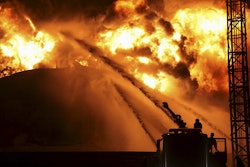
This article originally appeared in the March/April 2014 print issue of Food Manufacturing.
The Food Manufacturing Brainstorm features industry experts sharing their perspectives on issues critical to the overall food industry marketplace. In this issue, we ask: What types of plant automation should food manufacturers be looking at on a component level to most effectively streamline their operation?
Maximizing productivity and profitability through automation is fundamentally important for manufacturers concerned with food safety and quality assurance. In order to most effectively streamline operations, automation must cover the regular quality inspection undertaken by workers. Machine vision is the optimal way to inspect for multiple defects or issues at an extremely reliable and fast speed and without any contact with the product.
Machine vision integrates cameras that operate like a human eye: checking first the markings (printed characters, sell-by date, stickers and codes) and next examining the tightness of vacuum and modified atmosphere packages. Machine vision can even detect contaminants in the seam areas of sealed or heat-sealed packaging.
Machine vision proves most successful in the controlled environment of the factory floor, offering some important advantages over human vision in terms of cost, speed, precision and physical demands. Controlling sealing is part of the Critical Control Points (CCP) for sterilized product manufacturers. The advantage of a 100 percent inspection is that it ensures full control on this issue. Continuous control allows the immediate detection and withdrawal of the defective packaging. The manufacturer does not need to go back and control the batch from the beginning, which occurs in standard product control. Another advantage is that the volume of rejects tends to decrease and, in some instances, disappears.
The control equipment at the end of the packaging line not only provides instant detection but also stores data and statistics on each package. Manufacturers can refer to the saved data to validate later findings and make assessments about the line.
Machine vision is an automatic, reliable, contactless and non-destructive technology that takes part in the continuous improvement of the production cycle thanks to the immediate correction of packaging discrepancies. It also offers good traceability by making it possible to save and archive data.
For more food industry news and information, subscribe here and follow us on Twitter, Facebook or LinkedIn.



















